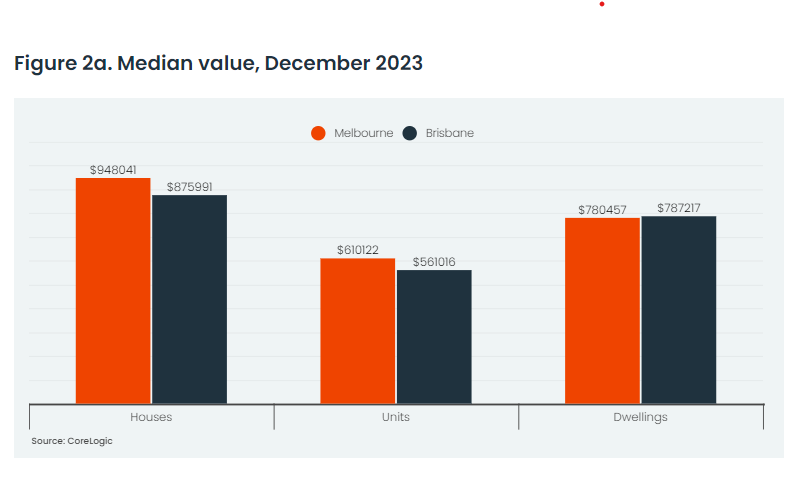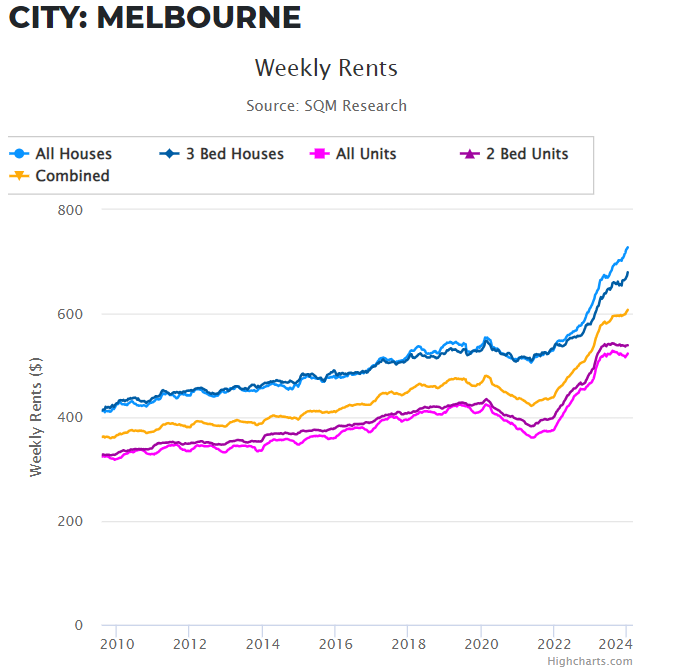

Fuelled by pandemic trends and lifestyle shifts, Brisbane's housing market has experienced a growth spurt, with dwelling values exploding by 50.2% since the pandemic’s onset.
In stark contrast, Melbourne's values climbed a sluggish 11%, the weakest among capital cities.
This disparity propelled Brisbane's median dwelling value from $187,000 below Melbourne's in March 2020 to a remarkable $7,000 above by December – a feat not seen since 2009.
So, what’s driving Brisbane’s boom, and can it keep up the pace throughout 2024?

While Melbourne holds the edge in house and unit values individually, a key factor behind Brisbane’s property boom lies in the composition of its housing stock.
The reason for this is that Melbourne has a higher share of units as a portion of the dwelling market, according to Eliza Owen (pictured above left), head of research at CoreLogic.
CoreLogic estimated that units comprise 33.8% of Melbourne dwellings, compared to 25.6% of homes across Brisbane.
“Because units are generally lower value than detached houses, a higher portion of units brings down the median dwelling across all houses and units,” Owen said.
However, Owen said this might “rebalance a little” in the near term.

Another factor that has heavily influenced Brisbane and Melbourne’s recent property prices was the physical attributes of each state and how they approach the COVID-19 pandemic and its fallout.
The pandemic reshaped priorities, and Brisbane’s sunny disposition, proximity to nature, and strong remote work scene drew new residents.
Conversely, Melbourne’s extended lockdowns further fuelled this interstate migration, with Queensland welcoming a record 51,500 new residents in the year to March 2022, compared to Victoria’s loss of 20,000.
This influx boosted demand and pushed Brisbane values upwards.
While the most recent migration data is only available at a state-wide level, regional population data from the ABS showed that over the year to June 2022, Brisbane’s population grew by 2.3%, more than double the rate across Melbourne (1.1%).
“Value falls across Melbourne were also exacerbated by the loss of overseas migration through COVID, but net overseas migration turned positive in 2022,” said Owen.
Another interesting factor to come out of the pandemic has been Brisbane’s consistent surge in rental prices.
From March 2020 to January 2024, Brisbane’s average weekly rent for combined properties climbed by nearly 50%, from $429 to $641, according to SQM Research.
For Melbourne, the average weekly rent only increased by 27% from $478 to $607 in the same timeframe after experiencing a drop throughout the pandemic.
For Brisbane buyers agent Joel Brown (pictured above right) from Nexgen Property Group, this growth meant tenants and investors alike were closely monitoring the trend, which was a testament to “the city's growing appeal and robust economy”.
“The demand for rental properties, driven by low supply, declining construction approvals, and a surging population, has created a competitive rental market,” Brown said. “This environment is particularly advantageous for investors, who are set to benefit from the increasing cash flow and rising equity in their portfolios.”


Brisbane wasn't alone in its climb up the property ladder in December.
Perth's average house price finally squeezed past Hobart's, putting it in second to last place among the capital cities, according to CoreLogic. Adelaide had already made the same move earlier in the year, leaving Hobart trailing behind.
Brisbane was not the only city to ‘shift ranks’ in December, with the median dwelling value in Perth inching above the median Hobart dwelling value in the month.
However, Owen said these new rankings could be tested in the months ahead.
“Brisbane remains a seller’s market, but the pace of monthly growth in values has eased slightly, from 1.5% in October 2023 to 1.0% in December,” Owen said. “As home values in the city continue to rise, there is less claim to Brisbane being relatively affordable, and some prospective interstate movers may decide to remain in their city.”
“Recent weeks have also demonstrated there is some added risk to pockets of the Brisbane property market from extreme weather and flooding, which could impact demand in the near term.”
However, Brown had a sunnier outlook for the Sunshine State’s capital, driven by Australia’s macro trends.
“Lower inflation (November’s figures 4.3% against the RBA's 4.5% forecast) could unlock interest rate cuts, especially if it keeps heading towards the target 2% to 3% range,” Brown said. “Meanwhile, record immigration with foreign buyers and 2023’s impressive price growth suggest that a rate drop will trigger a resurgence of buyers.”
“Those priced out by high rates and low borrowing capacity will jump back in, boosting demand for the limited housing supply.”
Brown also said that construction wasn't keeping pace with current and future demand, despite the government's $10 billion housing fund for 40,000 new homes (roughly $250,000 per property).
“As history shows, government involvement often prompts builders to raise prices, further inflating property values and creating equity for existing owners,” Brown said. “This, combined with dropping rates, returning buyers, foreign demand, and limited supply, will likely continue pushing capital growth upwards.”
